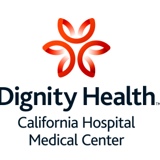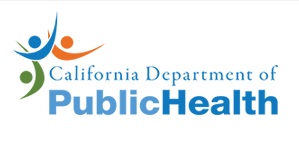Information
-
Document No.
-
Environmental Tours
-
Dignity Health / California Hospital Medical Center
-
Conducted on
-
Prepared by Environment of Care Committee Mark Muniz, Chair
-
Location
-
Zuleima Garcia, Facilities Coordinator Susan Viker, Infection Prevention Valerie Lowe, Infection Prevention Mario Borboa, Clinical Engineering Connie Rangel, Emergency Preparedness Eddie Ortiz, Security Ron DiBona, EVS Maria Canal, EVS Miguel Torres, Construction Coordinator Mark Muniz, Director of Engineering
Utilities and Medical Equipment
-
Omnicells, medication and patient refrigerators are plugged into E-power
-
Refrigerators have current temperature logs. Corrective action is documented for any temps out of range
-
Extension cords are hospital grade, UL listed, not "daisy-chained".
-
Describe problem and location
-
Temperatures are comfortable.
-
Negative pressure rooms are negative. Positive pressure rooms are positive.
-
Room number with incorrect pressure.
-
Medical Equipment has current PM stickers.
-
CEID#. Floor and room location
-
Broken equipment or furniture is tagged out of service and a work order created.
-
Add signature
Fire and Life Safety
-
Corridors are clear of carts and equipment that is not "in-use".
-
Hold-open smoke barrier and fire-barrier doors free to swing closed- no obstructions.
-
Fire extinguishers in cabinets with current inspection tag.
-
Fire extinguishers unobstructed.
-
Medical gas shut-off valves labeled with rooms they serve, no obstructions.
-
Fire barrier doors, smoke barrier doors, storage and stairwell doors are free of any holes or penetrations.
-
Door number. Photo
-
Fire barrier doors, smoke barrier doors, storage and stairwell doors close and latch securely when released.
-
Door number.
-
Trash and linen chute doors self-close and latch securely. Corridor doors protecting trash and linen chutes self-close and latch securely.
-
List the floor and trash or linen chute room number.
-
No conduit, cables, pneumatic tubing or other materials are supported by or attached to sprinkler piping above the ceiling.
-
Describe location: building, floor, other. Describe what is attached to sprinkler.
-
Sprinklers have escutcheons tight to the ceiling, free of rust and dust. There is 18" clearance below sprinklers.
-
Describe problem and location
-
Add signature
Compressed Gas and Hazardous Materials Safety
-
Cylinder holders and racks are labeled "FULL, IN-USE, or EMPTY?
-
Are all compressed gas cylinders secured in a holder, caddy or cart?
-
Are FULL cylindersnsegregated from IN-USE and EMPTY?
-
-
Are all hazardous waste containers properly labeled?
-
Do pharmaceutical containers have a lid attached, properly labeled day put into service and last date to dispose (90 days)?
-
Janitor's closet clean, EVS chemicals clearly labelled and appropriately stored?
-
If there is an eyewash station in the unit:<br>Is there a green and white eyewash sign?<br>Is the eyewash station easily accessible, no obstruction?<br>Does the eyewash station clean, with caps on?<br>Is there a tag with weekly tests documented?
-
Add signature
Cleanliness
-
Floors, carpets, baseboards, walls, doors clean
-
Bathrooms clean
-
Sink areas clean, free if spills
-
Furniture clean and in good condition
-
Shelving, drawers, counters and cabinets are clean
-
Windows and window sills are clean
-
Hoppers are clean
-
Soiled linen is bagged in hoppers - no soiled linen on the floor
-
Microwave, ice machine and coffee machines are clean
-
Ceiling supply, return and exhaust vent grills are clean
-
High level dusting is being performed.
-
Waiting areas are clean
-
Lounge and meeting areas are clean
-
Hand towel dispensers are full and operable
-
No evidence of roaches, ants, flies mice or other insects or vermin
-
Sharps containers are not overfilled
-
Trash and other waste containers are not overfilled.
-
Containers in soiled utility rooms are lined with bags
-
Access to the hopper or the sink is not blocked by equipment
-
Soiled linen hampers are in the patient rooms, not in the soiled utility room.
Infection Prevention
-
All supplies are stored off the floor. Bottom shelves are solid. There are no shipping containers in patient care areas.
-
Room # of violation
-
Is clean linen appropriately stored and covered? No pillows stored on top of the cart?
-
The unit is free of expired or open supplies, food or medications.
-
Equipment is cleaned properly, covered with a plastic bag, stored appropriately.
-
The unit is free of staff food or drink at the nurse station, medication prep and other patient care areas.
-
PPE is adequately stocked and available.
-
Doors, walls, white boards free of tape and stickers.
-
Describe the problem and the location.
-
Crash carts locked and checked daily.
General Maintenance and Safety
-
Are walls and floors around toilets, sinks and showers free of leaks or water damage?
-
Describe problem and location.
-
Ceiling tiles are in place and in good shape- clean, no water stain or damage.
-
Describe problem and location
-
Walls are free of holes, cracks, peeling paint?
-
Describe problem and location
-
Window blinds are in good shape. No missing blinds.
-
Room number
-
Receptacles are in good condition. No broken or missing cover plates.
-
Describe problem and location
-
Shelving, drawers, counters and cabinets all function properly.
-
Describe problem and location
-
All lights are functional. Diffusers are secure and clean.
-
The department is free of broken equipment or physical plant deficiencies that need immediate attention.
-
Describe equipment or problem: Location, Floor, Room
-
Add signature
-
Are heavy items stored on lower shelves, lighter items on upper shelves?
-
Are bookcases and cabinets braced and secured to the wall?
-
Is equipment and heavy items on countertops secured so they won't fall off in an earthquake?
Staff Knowledge
-
Do employees know where the nearest smoke compartment is in case if a fire?
-
Can employees explain the 4 most important responses they should carry out as a team in the event of a fire in their unit?
-
Can employees explain evacuation procedures (horizontal, ambulatory first; bed-ridden, critical and vertical last.
-
Do employees understand he concept of why hospitals "shelter-in-place"?
-
Do employees know how to locate the hospital's Emergency Operations Plan?
-
Do employees know what their role is in a Code Pink?
-
Do employees know what MSDS stands for? SDS? Do they know where to find MSDS or SDS information?
-
Can staff explain what to do when a piece of medical equipment broken? Who do they call? What form do they fill out? Where do they put the equipment?
-
Do staff know the procedure for contacting Security in an emergency situation or to request an escort?
-
Add signature








